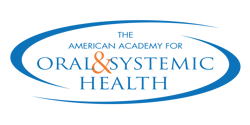Malocclusion and TMD: One More Component in the Mouth/Body Connection
Abstract
This article introduces yet another important factor linked to the mouth/body connection - temporomandibular disorder. Head, neck and jaw muscle tension extends to other areas of the body often leading patients into being treated by health care professionals other than the dentist. Emphasis is placed on proper training, recognition, diagnosis and the dentist’s role in treatment.
TMD Crosses into the Systemic Component
Infection and inflammation are the key components linked to the mouth/body health connection. Another often overlooked constituent is muscle and joint disharmony in the head and neck. Occlusion problems and improper TMJ function will greatly affect the intricate balance of the muscles that work in the masticatory process, but chronic issues can range from head to toe.
TMD Wears Many Masks
Temporomandibular Disorder is known in some professional circles as “The Great Imposter.” Symptoms crossover into territories that lead patients to medical specialists in several disciplines. TMD patients my see chiropractors and physical therapists for joint and muscle pain in areas surrounding the bilateral joint, as well as for tension at the base of the neck. Also, these patients often fill the waiting rooms of ENTs, neurologists, and emergency rooms for symptoms which unsuspectingly originate from TMD. Unpleasant conditions such as migraines, ear pressure or ringing, vertigo, and lower back pain are common in these patients. In the case of ear problems and dizziness, the compression of the condyles into the external auditory meatus impinges upon the Eustachian tube and Cranial Nerve VIII (controlling balance and hearing) - both running in close approximation to the superior head of the mandibular condyle. Specialists may search for sinus problems and infections, when the issue is actually an anatomical one related to the joint and associated muscles and soft tissues.
Proper Education and Dialogue with Physicians is Key
Knowing the source of an infection is the key to eliminating it. Likewise, when TMD is the source of symptoms (regardless of presentation or to which specialist they are presented) successful treatment requires accurate diagnosis and treatment by a qualified team of health professionals led by a dentist trained in TMD. To this end, dentists should seek higher education as to the cause-effects of TMD and be capable of identifying TMD, and either provide proper care or make appropriate referral to someone who can. Many continuing education learning centers for advanced dentistry have courses specializing in occlusion and TMD therapy. Additionally, given the many parts of the body affected by TMD and the health disciplines involved in those areas, it is important for dentists and physicians and related health professionals to communicate with each other regarding their patients who present with and suffer from these conditions. By working to balance the joints and musculature in the cranio mandibular complex, we can unmask the Great Imposter which sends patients through a labyrinth of physician and emergency hospital visits.
